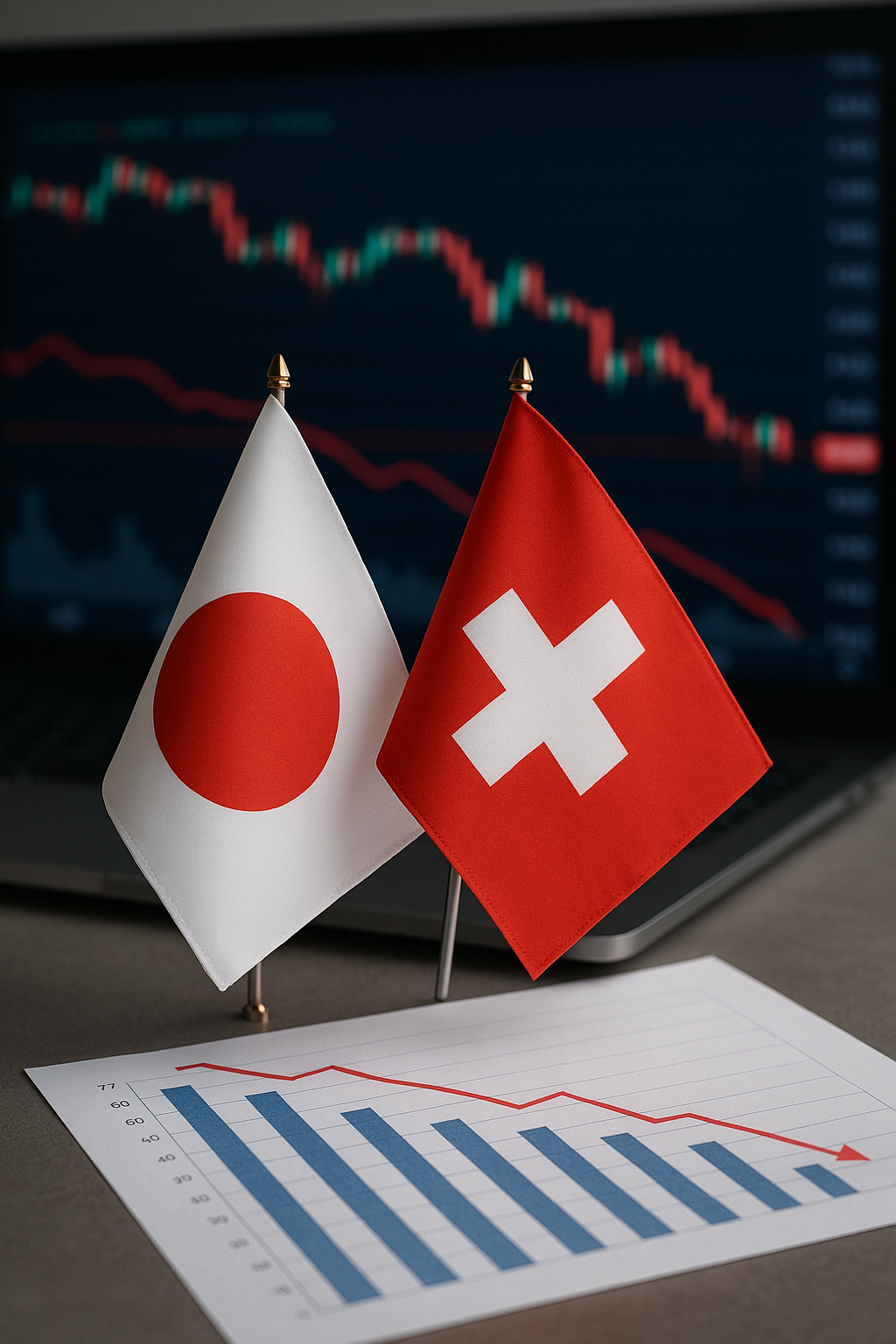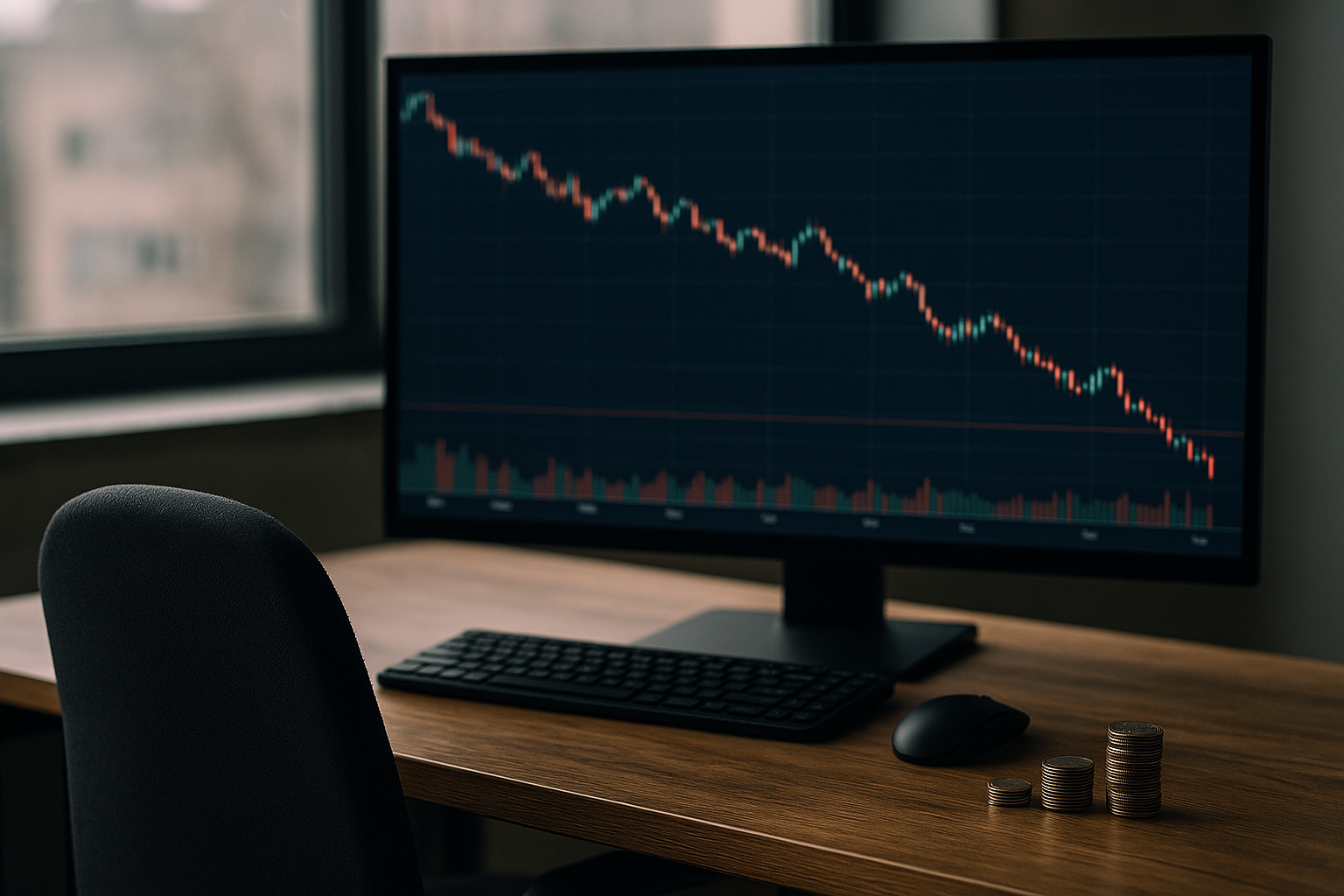Markets Take a Cautious Turn as Trade Jitters Resurface
Global equity markets stumbled on Thursday as renewed concerns over U.S.–China technology trade tensions and mixed corporate earnings pressured investor sentiment. The S&P 500 and Nasdaq Composite both closed lower, while major Asian indices followed suit amid reports that Washington is considering tightening software and semiconductor export rules to China — particularly in AI-related applications.
According to The Wall Street Journal and The Star (Reuters), the proposed measures could restrict the export of high-performance design software and AI training frameworks, marking an escalation in the ongoing technological standoff. The news overshadowed otherwise resilient earnings reports from several large-cap U.S. firms, reinforcing concerns that macroeconomic and geopolitical risks are creeping back into markets after months of relative calm.
“The market’s reaction shows how sensitive investors remain to geopolitical catalysts,” said a strategist at Morgan Stanley. “Even strong earnings aren’t enough to offset uncertainty around trade, regulation, and global growth.”
A Shift in Market Tone
The Dow Jones Industrial Average slipped around 0.5%, the S&P 500 declined 0.7%, and the Nasdaq fell nearly 1.2% as technology shares bore the brunt of the selloff. In Asia, the Hang Seng Tech Index dropped 2.3%, led by weakness in Alibaba, Tencent, and Baidu, as investors weighed the possibility of new export restrictions disrupting supply chains and AI software collaborations.
Meanwhile, Treasury yields moved slightly lower as investors sought safety, with the 10-year yield hovering around 4.18%. The U.S. dollar strengthened modestly against major currencies, while gold prices edged higher — a classic sign of defensive repositioning.
This week’s market tone stands in stark contrast to earlier optimism around earnings season, where roughly 75% of S&P 500 companies have beaten EPS expectations so far, according to FactSet. Still, management commentary across sectors hints at margin compression, rising input costs, and “demand normalization” after a period of post-pandemic overperformance.
Why This Matters for Investors
The re-emergence of U.S.–China trade tensions is a reminder that macro-political risks can swiftly derail equity rallies, particularly in sectors tied to global technology supply chains. Export-sensitive names in semiconductors, design software, and cloud infrastructure could face renewed volatility in the short term.
According to Goldman Sachs, the AI hardware and software export segment represents more than $200 billion in annual trade flow, meaning even modest policy changes can ripple across multiple markets. Companies with heavy exposure to cross-border data processing or AI model training may face headwinds, while domestic or regionally focused players could benefit from onshoring trends.
“Investors should remember that these regulatory shifts are structural, not cyclical,” said a Bloomberg Intelligence analyst. “They shape not just trade flows but the broader architecture of global technology competition.”
Rotation Toward Defensive Plays
Amid the uncertainty, investors appear to be trimming pro-cyclical exposure in favor of more defensive allocations. Health care, utilities, and consumer staples outperformed on Thursday, while semiconductor and growth-oriented software names lagged.
Analysts suggest this defensive tilt could persist if macro uncertainty remains elevated. According to Bank of America’s latest fund manager survey, allocation to cash and bonds has risen to its highest level since early 2024, reflecting a flight to stability amid geopolitical and policy noise.
At the same time, volatility gauges like the CBOE VIX Index climbed to 17.5 — modest by historical standards but indicative of growing caution among institutional investors.
Future Trends to Watch
- Policy Clarity on China Trade: Investors will closely track any U.S. Commerce Department announcements regarding AI or semiconductor export restrictions in coming weeks.
- Earnings Revisions: Guidance from major U.S. tech firms could signal whether demand and pricing pressures are intensifying.
- Rotation Themes: Expect renewed attention to value-oriented and dividend-paying sectors if risk aversion persists.
- Global Macro Indicators: Slowing industrial output in China and Europe could shape investor appetite for cyclical exposure heading into Q4.
Key Investment Insight
The latest pullback highlights a critical inflection point for equity markets: while earnings remain relatively solid, macro headwinds are regaining control of sentiment. For investors, this may be a time to rebalance portfolios — maintaining exposure to quality growth while increasing allocation to defensive and income-generating assets.
Investors should also watch for opportunities in undervalued segments such as infrastructure, defense, and selective industrials that may benefit from policy-driven spending amid trade decoupling trends.
As markets navigate the uneasy intersection of earnings optimism and geopolitical risk, vigilance and flexibility will be key.
Stay ahead of these fast-moving developments with MoneyNews.Today — your trusted source for real-time investor insights and global market intelligence.





